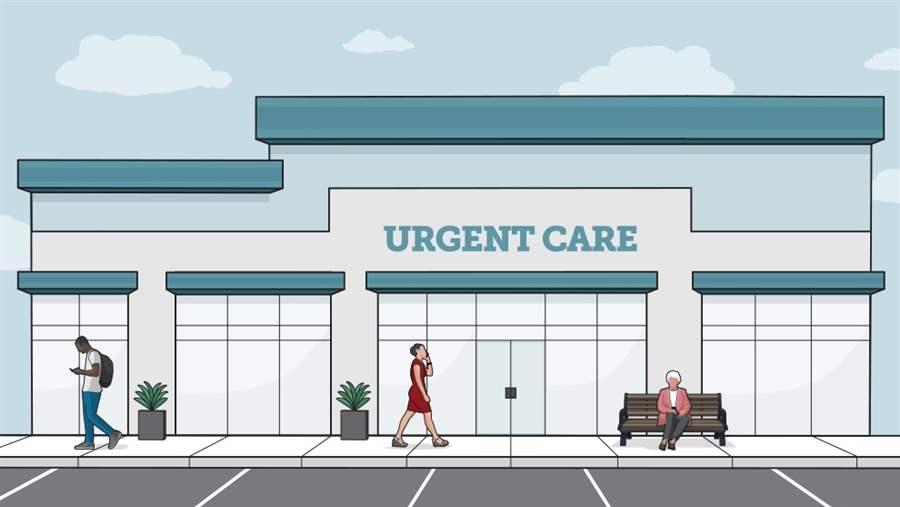Comprehending the Importance of Urgent Care Solutions for Non-Life-Threatening Medical Issues
The relevance of immediate treatment services for non-life-threatening medical problems can not be overstated, particularly in today's health care landscape. These facilities provide a crucial choice for people looking for timely interest for conditions that require immediate treatment yet do not necessitate a check out to the emergency room. By understanding the advantages of immediate care, such as decreased wait times and price performance, one can much better appreciate their role in patient wellness monitoring. The subtleties of how to browse these services effectively remain to be discovered, raising inquiries regarding their ideal use.
What Is Urgent Care?
Immediate treatment refers to a group of medical solutions designed to attend to non-life-threatening conditions that need prompt interest yet do not warrant a browse through to the emergency space. These centers offer a bridge in between primary care and emergency situation services, using accessible health care alternatives for individuals experiencing severe clinical concerns, such as minor fractures, strains, infections, or extreme diseases that develop unexpectedly.

The range of services provided by urgent care centers can vary but generally consists of treatment for common disorders like colds, influenza, and allergies, as well as small injuries (urgent care). Furthermore, many immediate care facilities use preventative services, such as inoculations and physical examinations, to deal with broader wellness requirements. By offering a practical option for urgent clinical issues, these centers play a crucial function in the healthcare continuum, making certain that individuals receive ideal care when they require it most
Benefits of Urgent Treatment Services
Many people locate that utilizing urgent treatment solutions gives substantial benefits over traditional emergency area brows through or waiting for a main treatment consultation. Urgent care facilities commonly have much shorter wait periods, allowing clients to get prompt clinical interest when they require it most.
An additional benefit is the extensive hours of procedure. Several immediate treatment facilities are open nights and weekend breaks, suiting people who may not have the ability to see their health care medical professional throughout normal workplace hours. This adaptability makes it less complicated for people to accessibility treatment at their comfort.
Furthermore, urgent care services frequently offer an economical option to emergency clinic. When seeking therapy for minor ailments at immediate care facilities instead than healthcare facility emergency departments., individuals often face reduced co-pays and general expenses - urgent care.
Lastly, immediate care facilities are furnished to deal with a variety of non-life-threatening concerns, supplying a broad array of solutions under one roofing system. This comprehensive strategy not only streamlines the therapy procedure however additionally improves patient contentment by delivering punctual and effective care.
Typical Conditions Dealt With
What types of non-life-threatening problems can patients expect to obtain treatment for at immediate care centers? Immediate care centers are equipped to manage a wide range of usual medical problems that call for prompt interest yet do not pose an immediate hazard to life. These centers frequently deal with conditions such as minor cracks, strains, and strains, supplying important treatment for try these out injuries that take place during everyday tasks or sporting activities.
Additionally, clients often look for therapy for respiratory infections, including colds, flu, and bronchitis, where prompt treatment can you can try here alleviate symptoms and stop difficulties. Skin conditions such as rashes, insect bites, and minor burns are likewise frequently attended to, as prompt treatment can minimize pain and reduce the risk of infection.

Comparing Urgent Treatment and Emergency Clinic

One significant difference lies in wait times; urgent treatment centers commonly have much shorter delay times contrasted to emergency situation spaces, which can be crowded with more vital situations. This effectiveness enables clients to get timely therapy for their conditions.
From a monetary point of view, urgent treatment brows through tend to be less costly than emergency situation space check outs. Insurance policy copays and out-of-pocket expenditures are typically lower at immediate care centers, making them an extra affordable option for non-emergency scenarios.
Exactly How to Select an Urgent Treatment Center
Selecting the right urgent care center can considerably improve the high quality of care received throughout a non-life-threatening medical problem. When choosing an immediate care center, numerous essential variables ought to be taken into consideration.
First, examine the center's accreditation and licensing. Search for facilities that are certified by identified organizations, as this shows adherence to quality criteria. Next, examine the series of services offered. Some urgent treatment facilities specialize in details areas, while others supply extensive take care of different clinical issues.
In addition, think about the area and hours of operation. A conveniently located this page facility with prolonged hours can be crucial for timely treatment. It's likewise suggested to check the facility's wait times and client testimonials, which can provide insights into the general individual experience.
Verdict
In verdict, urgent care solutions play an essential function in dealing with non-life-threatening medical concerns effectively. Ultimately, recognizing the relevance of urgent treatment centers adds to improved healthcare management and client fulfillment.
 By supplying a convenient choice for urgent clinical problems, these centers play a critical function in the healthcare continuum, making certain that individuals obtain suitable treatment when they need it most.
By supplying a convenient choice for urgent clinical problems, these centers play a critical function in the healthcare continuum, making certain that individuals obtain suitable treatment when they need it most.Lots of individuals discover that making use of urgent treatment services supplies significant advantages over traditional emergency area check outs or waiting for a key care consultation. Many immediate treatment centers are open nights and weekend breaks, accommodating people who might not be able to see their primary treatment physician during normal office hours. Urgent treatment centers are developed to resolve non-life-threatening conditions, such as minor cracks, infections, and illnesses, supplying a convenient option to emergency situation rooms for those in demand of prompt care. Some urgent care centers specialize in details locations, while others provide extensive treatment for numerous clinical issues.